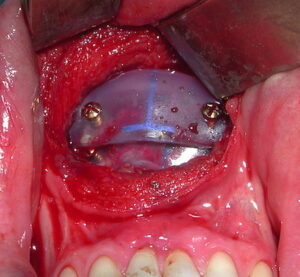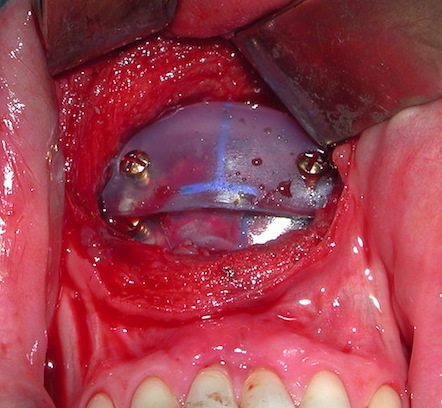Chin implants are the most common form of chin augmentation surgery and are effective for mild to moderate horizontal deficiencies. But in more significant horizontal chin deficiencies the selected size may still be inadequate. Or the patient may decide later once all the swelling has gone down that they really want a larger implant size.
When the primary chin implant implant augmentation leaves a persistent chin deficiency options include replacement with a larger implant (if one is available), change to a custom implant design, convert to a sliding genioplasty procedure….or stack a new implant one top of the existing one. Such a stacked implant approach is always an option but should be reserved as a last resort due to economic reasons. (which is not necessarily a bad reason)

External shape concerns would be the other issue since the double stacking of standard anatomic and extended anatomic chin implant styles will create a rounder more narrow chin shape. (which is acceptable for many women but may not be in most men)
Dr. Barry Eppley
Indianapolis, Indiana



